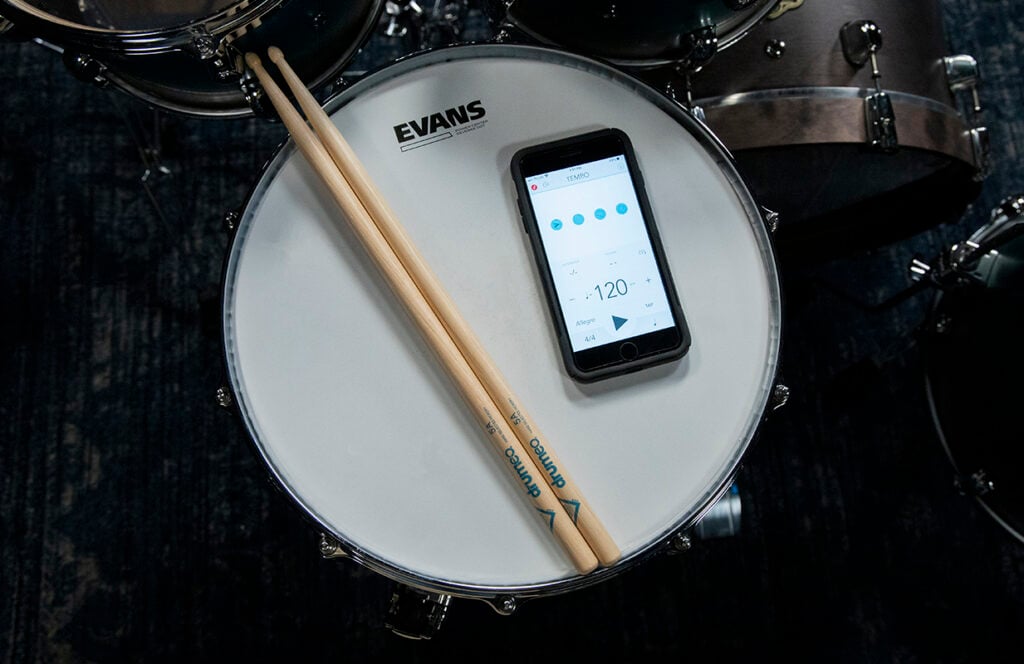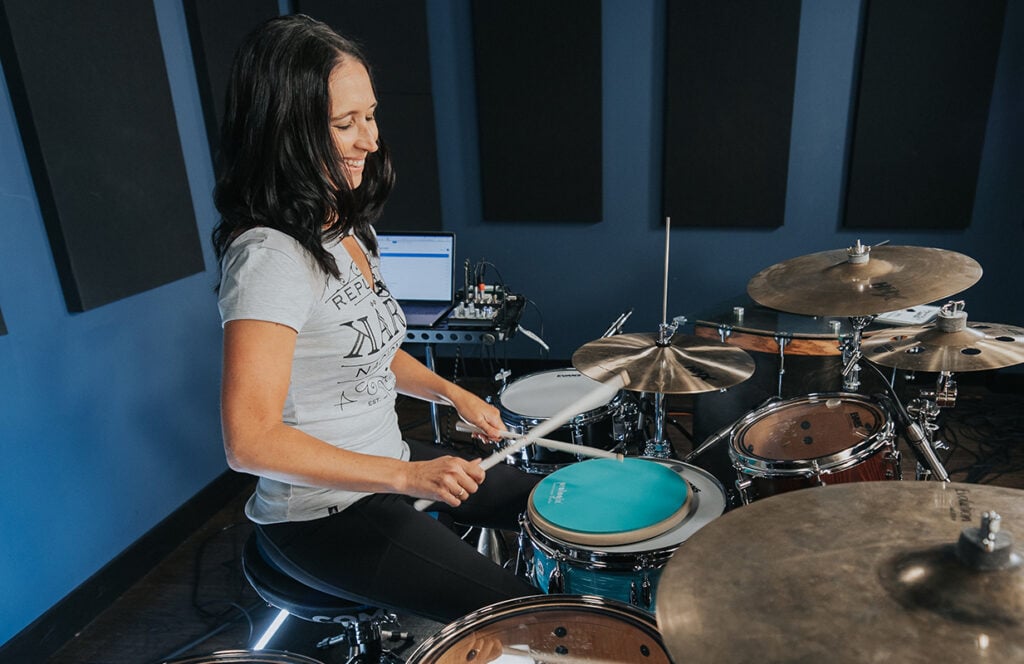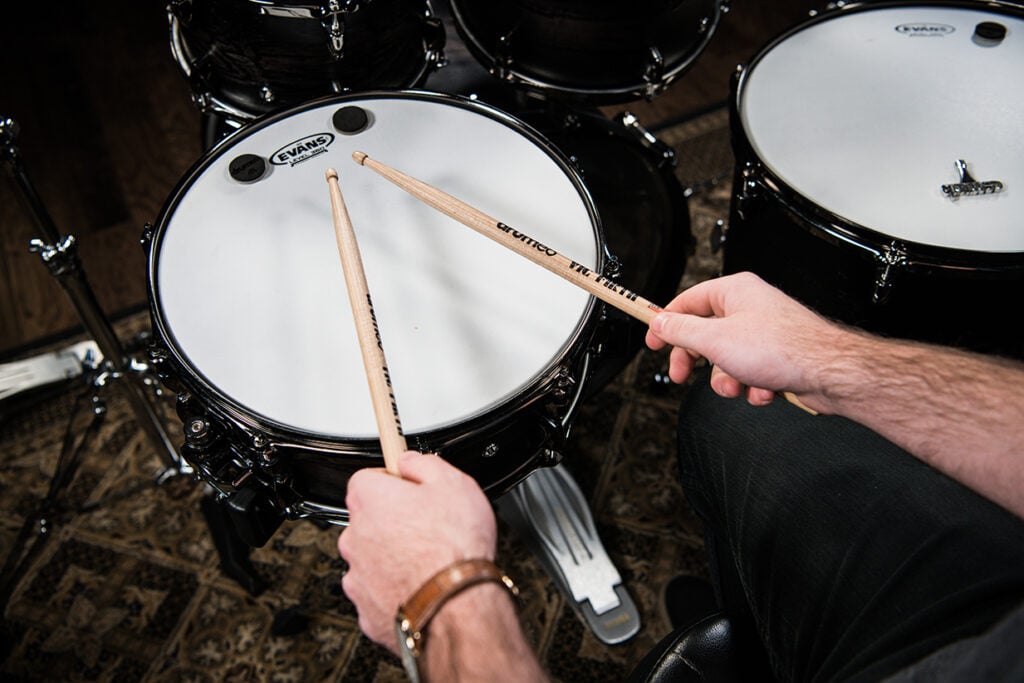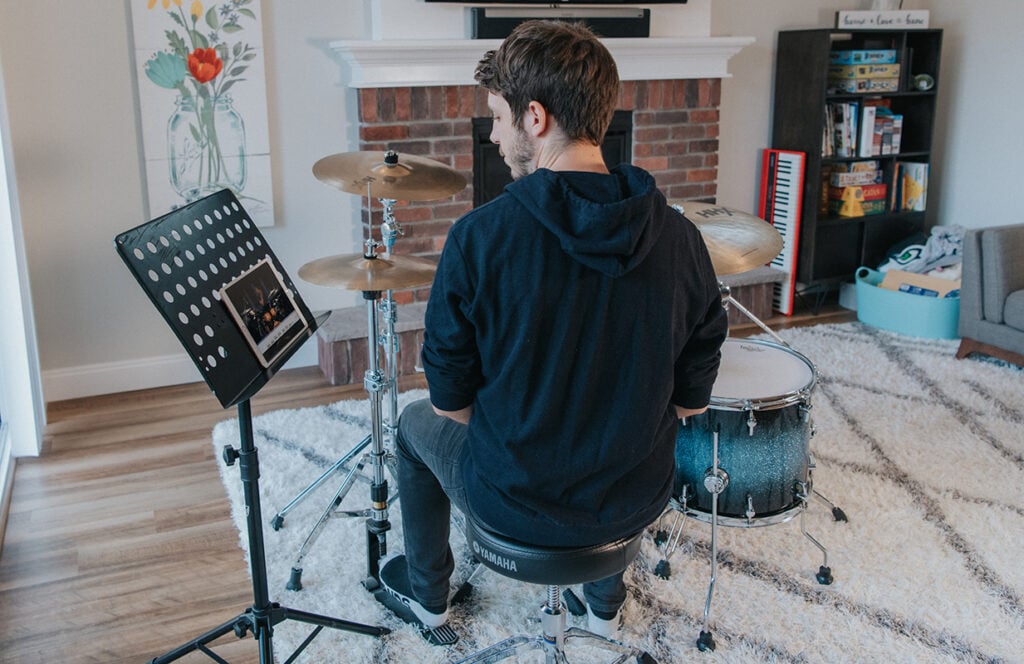The flam is one of the most popular drum rudiments and you can find it in many other rudiments as well. Consisting of a grace note (lighter stroke) that leads into a full stroke, flams are popular in every style of drumming, from rock and jazz music to marching pieces.

It’s simple: you play a light stroke (grace note) with one hand as a lead-in to a full stroke with the other hand.
There’s no rhythmic value to a grace note, so it’s up to you to decide how much space you want to leave between that and the primary note (less is better).
Flams can be found in many other rudiments, so you’ll want to get a strong handle on this early.
Here’s what a flam sounds like:
You can use this tool to practice along at the tempo that’s best for you (it’s the one Drumeo members use when practicing with the 3000+ play-along tracks inside our members area).
► Click here if you want to learn how to read drum music
The biggest challenge in mastering this rudiment is distinguishing between the grace note and the primary note. Make sure to leave very little space between them and keep the drumstick low before you play the softer note.
Don’t play the two notes at exactly the same time. That’s something else called a “flat flam” or a “double stop”. Mind the gap!
Here are some tips to help your flams.

When you’re first learning how to play something, it’s fine to test it out without a metronome as you get used to the pattern. But you shouldn’t go click-free for long. The metronome will help you develop a better internal clock and show you exactly where the timing of your strokes is inconsistent (or where it’s right on the grid).
You can buy a physical metronome at a music store or download a metronome app online.

While it might be tempting to get up to speed as quickly as possible – especially if you’re feeling confident – make sure you’re really starting with a soft grace note and that your technique is solid.
Be honest with yourself and don’t increase the tempo until you’ve really got it down. Don’t just say “it’s good enough”. Develop control first, and speed will come later.
Try setting your metronome to 60 BPM and play a flam on each quarter note, alternating your lead hand each time. Then slowly work your way up 5 BPM at a time.

If you’re a right-handed drummer, you probably default to starting single stroke rolls with your right hand. Make sure you also practice starting rolls with your left hand. This will help you get a more consistent sound out of both sticks and give you more confidence and control.

It’s easiest to correct your posture or grip immediately if you’re watching yourself in a mirror. Try to set up a practice pad and a snare stand in front of a full length mirror if you can.
You’ll be able to notice if you’re gripping your sticks too hard, or if your stick height doesn’t look right. Use your reflection as a window into how you’re doing. It’s like becoming your own drum teacher!

While playing in front of a mirror will help you fix issues on the fly, you might not realize when something is wrong during your practice session. Sometimes we don’t notice issues while we’re in the middle of playing – especially if we’re concentrating hard.
Whether you’re propping your phone on your dresser or capturing it all with a camera and tripod, it’s helpful to watch your practice sessions and critique yourself from a ‘third party’ perspective.
We’ve put together a playlist with drumless tracks at different tempos so you can practice this rudiment over real music:
Once you’re comfortable playing on a practice pad or a single drum, try it around the drum set.
You can play flams on one drum or break them up between multiple surfaces. Try the following exercises to get started.
#1:
#2:
#3:
#4:
#5:
Any surface can be part of the pattern! You could also challenge yourself by breaking up the sticking between your hands and feet.
Learn these tunes to get comfortable with this rudiment in practice:

The flams come in at the end of the intro to one of the biggest songs in grunge rock history. Learn it slowly and pay attention to the space between the grace note and primary note.

The flams around the toms are a blast to play.

This section sounds like a typical rock beat, but instead of having the right hand on a cymbal, the whole thing is played on the snare drum. And when you’d expect the left hand to come in on the backbeat, it comes in slightly early in the form of a grace note.
With enough solid practice, you should start feeling more confident in your playing. Mastering the flam – one of the most important rudiments – will get you one step closer to meeting your drumming goals.
The next rudiment you should learn is the flam accent, which is basically a single stroke roll in triplets with flams.
After that, check out the flam tap. You’ll also find flams in the flamacue, flam paradiddle, the flam paradiddle-diddle, the pataflafla, the single flammed mill, the swiss army triplet, the inverted flam tap, and the flam drag.


By signing up you’ll also receive our ongoing free lessons and special offers. Don’t worry, we value your privacy and you can unsubscribe at any time.
We use cookies for traffic data and advertising. Cookie Policy »